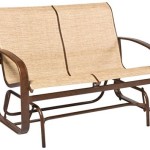Best Wood Oil For Furniture: A Guide to Protect and Enhance Your Pieces
Wood furniture is a timeless investment, adding warmth, character, and elegance to any space. However, wood is susceptible to the elements, requiring proper care and maintenance to preserve its beauty and longevity. One of the most effective ways to protect and enhance your wood furniture is through the use of wood oil. Wood oil penetrates deep into the wood, nourishing and protecting it from scratches, stains, and moisture. With a wide range of options available, choosing the best wood oil for your furniture can seem daunting. This article will guide you through the key factors to consider, helping you select the perfect oil to bring out the natural beauty and resilience of your cherished pieces.
Types of Wood Oil
Wood oils are broadly categorized into two main types:
- Penetrating Oils: These oils soak deep into the wood, nourishing it from within and enhancing its natural grain patterns. They provide a protective barrier against moisture and dirt, while maintaining the natural look and feel of the wood. Examples include tung oil, linseed oil, and Danish oil.
- Finishing Oils: These oils primarily provide a protective layer on the surface of the wood. They often contain resins and polymers that harden, forming a durable film that resists scratches, spills, and UV damage. Examples include polyurethane oil, varnish oil, and epoxy oil.
The choice between penetrating and finishing oils depends on the desired level of protection and the aesthetic preference. Penetrating oils are ideal for enhancing the natural beauty of the wood while providing a subtle sheen. Finishing oils offer a more durable, protective layer, but they can alter the appearance of the wood, adding a gloss or sheen.
Factors to Consider When Choosing Wood Oil
Several factors influence the best choice of wood oil for your furniture:
1. Wood Type
Different wood types require specific oils for optimal results. For instance, softwoods like pine and cedar are typically more porous and absorb oil readily. Hardwoods like oak and walnut have denser pores and may require a thicker oil.
2. Finish
The existing finish of your furniture also plays a role in oil selection. If your furniture is unfinished or has a natural oil finish, penetrating oils are ideal. If it has a polyurethane or varnish finish, a compatible oil or a specific refinishing treatment may be necessary.
3. Desired Finish
The desired finish determines whether a penetrating or finishing oil is suitable. For a natural, matte look, choose a penetrating oil. For a glossy, protective layer, opt for a finishing oil.
4. Application Method
Some oils are easier to apply than others. Consider factors like drying time, viscosity, and whether the oil requires multiple coats.
5. Environmental Considerations
Some wood oils are formulated with natural ingredients and are environmentally friendly. Others may contain synthetic components that could be harmful to the environment.
Popular Wood Oil Choices
Here are some popular wood oil choices, along with their pros and cons:
1. Tung Oil
Tung oil is a natural oil derived from the tung tree. It is a popular choice for furniture because it penetrates deeply into the wood, providing a durable, water-resistant finish that enhances the wood's natural beauty. Tung oil is known for its long drying time, requiring multiple coats for a complete finish.
2. Linseed Oil
Linseed oil, extracted from flax seeds, is another natural oil with a long history of use in wood finishing. It provides a protective barrier against moisture and UV damage, enhancing the wood's natural color. However, linseed oil has a relatively long drying time and can yellow over time.
3. Danish Oil
Danish oil is a blend of linseed oil, varnish, and drying agents. It offers a faster drying time than pure linseed oil, while still providing a protective and nourishing finish. Unlike some other oils, Danish oil can be easily applied and wiped off, making it a good choice for beginners.
4. Polyurethane Oil
Polyurethane oil is a synthetic oil known for its durability and resistance to scratches and spills. It forms a hard, glossy finish that protects the wood from damage. However, polyurethane oil can alter the natural appearance of the wood and may require a special cleaner for maintenance.
5. Varnish Oil
Varnish oil is a blend of resins dissolved in oil, providing a protective and glossy finish. It is often used on furniture that is exposed to high traffic or harsh conditions. Varnish oil can be difficult to apply and may require multiple coats for complete coverage.
The best wood oil for your furniture depends on your specific needs and preferences. Carefully consider the factors discussed above before making your selection. Always follow the manufacturer's instructions for application and maintenance to ensure the best results and longevity for your cherished wood furniture.

Top 3 Traditional Wood Oils Finishes Direct

The Best Oil For Outdoor Wood Furniture Keep Your Timber Looking Timeless Jarrimber

Top 3 Traditional Wood Oils Finishes Direct

Top 3 Traditional Wood Oils Finishes Direct

4 Of The Best Oils To Use For Wood Furniture Amish Oak

The Best Wood Polish For Your Furniture Speakers Cabinets

Best Oil For Indoor Teak Furniture Master

Wood Oil Finish What Gives The Best On

The Best Oil For Outdoor Wood Furniture Keep Your Timber Looking Timeless Jarrimber

The Best Oil For Outdoor Furniture Real Milk Paint Co
See Also








